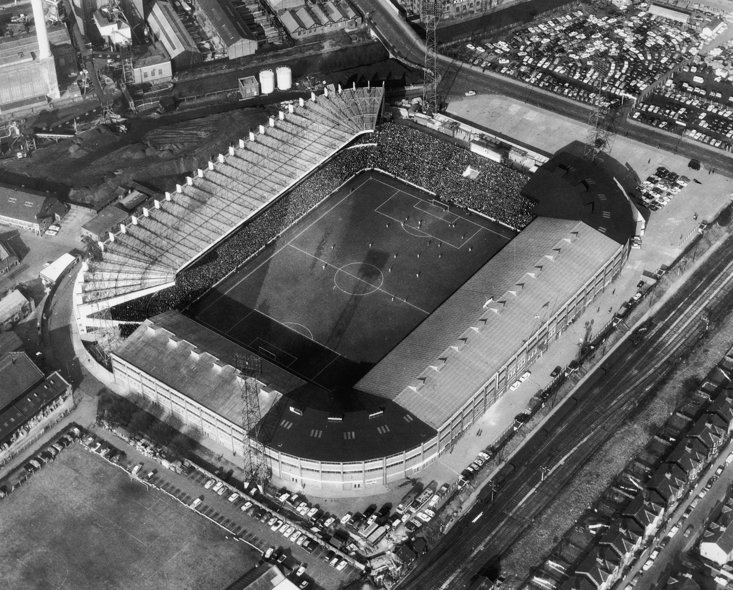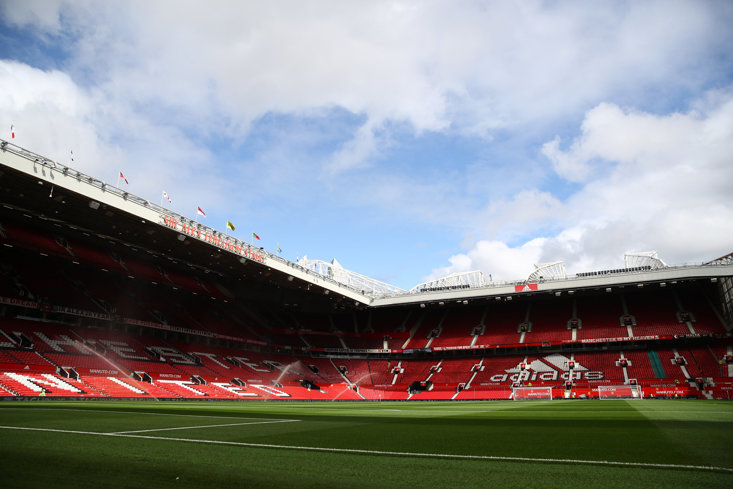It has witnessed many highs along with its fair share of heartaches, played host to rugby as well as The Rolling Stones, was almost flattened by the Luftwaffe and lived to fight another day, eventually becoming the biggest club stadium in the country.
Old Trafford stands tall on the landscape like the football cathedral that it has become, a beacon of greatness, an icon of the game and the city which, similar to the team that calls it home, has risen from the rubble to become one of the most famous sporting arenas in the world.
Opening its doors for the first time on 19 February 1910 and boasting a capacity of around 80,000, Old Trafford was a vast new construction which set the standard when it came to sporting stadia.
This wasn’t just a football ground, it was a statement of intent, a declaration of ambition, and a message to the rest of the footballing community which The Sporting Chronicle described as “the most handsomest, the most spacious and the most remarkable arena ever seen.”
Manchester United had gone massively over budget in their quest for the perfect playing arena, doubling the initial £30,000 estimate, though they were able to rely on the generous John H Davies, a wealthy businessman who had purchased the club eight years before under its old name, Newton Heath.
Unlike their former Bank Street ground, which was surrounded by terraced houses and was so run-down that parts of the roof would often blow off during high winds, this new arena was set in 16 acres of industrial Trafford Park.
Once inside, fans were greeted by a rabbit warren of tunnels, all leading to vast new terraces punctuated with hundreds of steel crush barriers, a trademark of Archibald Leitch, the godfather of early 20th century English football stadium design and responsible for more than 20 stadiums, including Stamford Bridge, Highbury and Villa Park.

Such was its design that wherever fans chose to stand they had a good view of the action. Those at the back had an almost panoramic vista of the playing area, while those who chose to be nearer to the action were almost at eye-level with the stars of the day such as Sandy Turnbull and Billy Meredith.
And Leitch wasn’t just the main man when it came to bricks and mortar, he was also more than aware of how important drainage, sunlight and airflow was when it came to maintaining a playing surface which would do justice to such a fantastic new ground.
The perfection of the Old Trafford pitch would lead The Umpire magazine to champion, “a beautiful green plush carpet’,” while also brashly claiming that they “know groundsmen who would weep at the thought of using such a perfect pitch for so reckless a game.”
As it turned out, United would lose their first ever game at Old Trafford, eventually going down 4-3 to Liverpool in a thriller, but by the end of their first full season inside their new home, they would be crowned league champions again – one of many trophies the stadium would welcome.
In subsequent years Old Trafford, like Manchester United, would see many changes, and on 11 March 1941 it was all but destroyed by German bombers having been used by the military as a storage depot during World War II.
United were forced to play their home games at Manchester City’s Maine Road ground as Old Trafford was eventually rebuilt following the end of the war. It reopened again just in time for the 1949-50 season.
The addition of floodlighting in 1957 enabled midweek games to be played, and the new roofing added in 1959 offered some protection from the Manchester rain for the thousands of fans who turned up each week, often straight from the nearby factories and warehouses.
After a series of renovations over the next three decades the capacity at Old Trafford was cut to 44,751 by the time the Premier League era began, but further expansion saw that number rise to 68,000 by 2000. Recent changes mean the ground can currently hold just under 75,000 - second only to Wembley among UK stadiums.

Old Trafford staged three games at the 1966 World Cup, not to mention a trio of group games, a quarter-final and a semi-final during the European Championships in the summer of 1996 along with the 2003 Champions League final.
It is considered a little rough around the edges these days, with reports recently claiming that potential investors being put off by the near £200m bill expected to be needed to bring Old Trafford in line with the more modern arenas which have been built for Premier League clubs of late.
But Old Trafford holds a special place in football and beyond. It has hosted world title fights and a plethora of pop concerts while also being the go-to destination for rugby league internationals, and since 1998 has been home to the Super League Grand Final.
When Archibald Leitch designed Old Trafford he set out to create an environment that inspired fans and players alike and in the years since it has been graced by some of the greatest names of sport and entertainment.
A ground that one of Manchester United’s favourite sons, Sir Bobby Charlton, once described as “the Theatre of Dreams”, Old Trafford is still regarded as one of the most iconic stadiums anywhere on the planet.
Five Memorable Matches from Old Trafford’s Past
Manchester United 2 Real Madrid 2: European Cup, April 1957
Trailing 3-1 from the first leg of the European Cup semi-final, Matt Busby’s ‘Babes’ welcomed Real Madrid to Manchester for Old Trafford’s first-ever game under floodlights and played out a spirited draw against the European champions. Bobby Charlton and Tommy Taylor scored to complete an impressive comeback but that team’s ambition was never fully fulfilled due to the Munich air disaster.
Manchester United 3 Sheffield Wednesday 0: FA Cup, February 1958
Less than two weeks after the Munich air crash, which claimed the lives of eight Busby Babes, a makeshift United side ran out for their FA Cup tie against Sheffield Wednesday at a packed Old Trafford. A blank team-sheet in the match programme was as poignant as it was tragic, but United somehow overcame the emotion of the occasion to win the game 3-0.
Manchester United 0 Manchester City 1: First Division, April 1974
Having lifted the European Cup at Wembley just six years before, United would suffer the ultimate humiliation of dropping into the Second Division for the first time in almost 40 years as they lost at home to Manchester City. Although results elsewhere meant relegation was unavoidable, a back-heeled goal by the former King of the Stretford End, Denis Law, provided the defining image of that fateful day.
Manchester United 3 Barcelona 0: European Cup Winners Cup, March 1984
Trailing 2-0 from the first leg, United appeared to be heading out of the European Cup Winners’ Cup as they welcomed Barcelona and Diego Maradona to Old Trafford. But a heroic performance from captain Bryan Robson, who scored twice, and a goal by Frank Stapleton ensured one of the most memorable fightbacks in the club’s history on a night the famous stadium apparently shook with excitement.
England 2 Greece 2: World Cup qualifier, October 2001
With Wembley being redeveloped, Old Trafford became the obvious choice for many of England’s home games. David Beckham’s injury-time equaliser against Greece, which secured qualification for the 2002 World Cup, would ensure the stadium’s place in national team folklore as well as Manchester United’s.